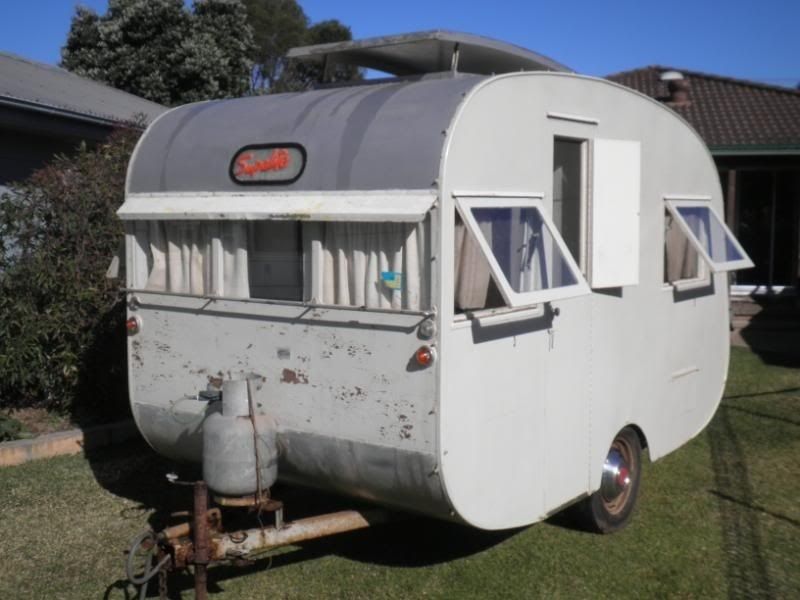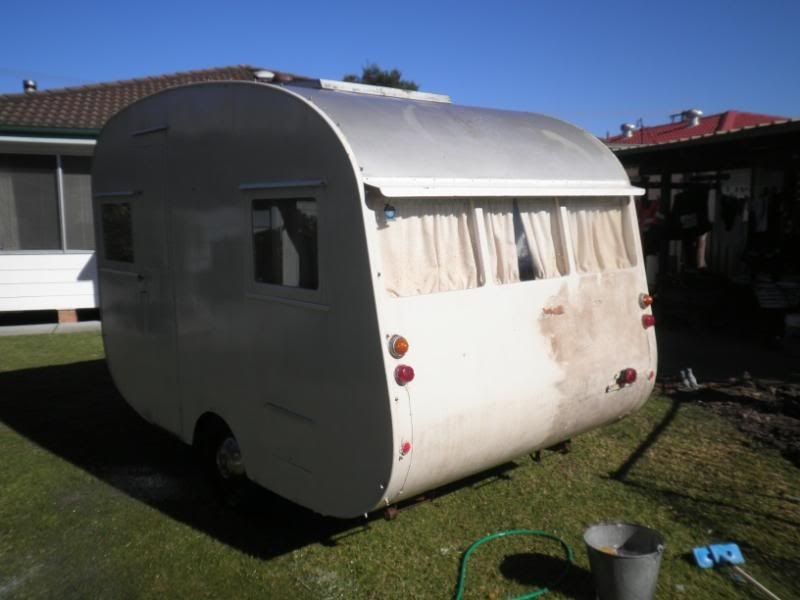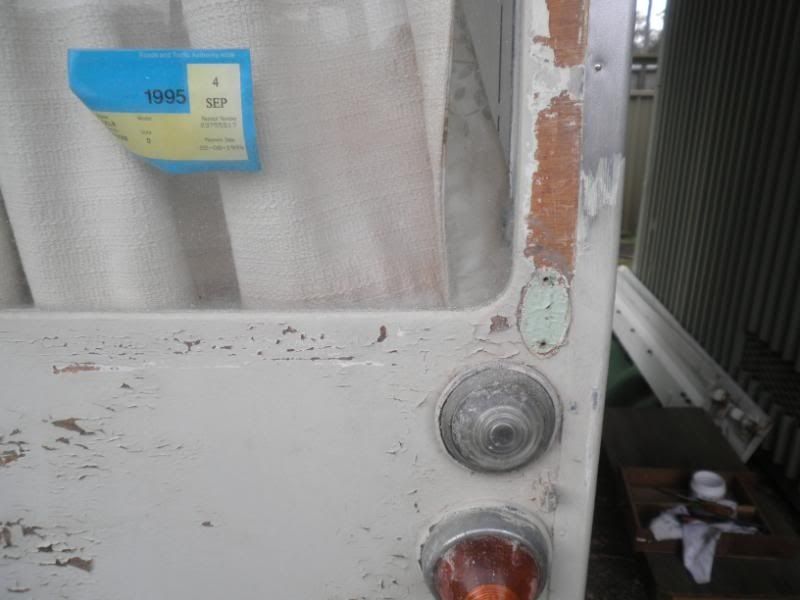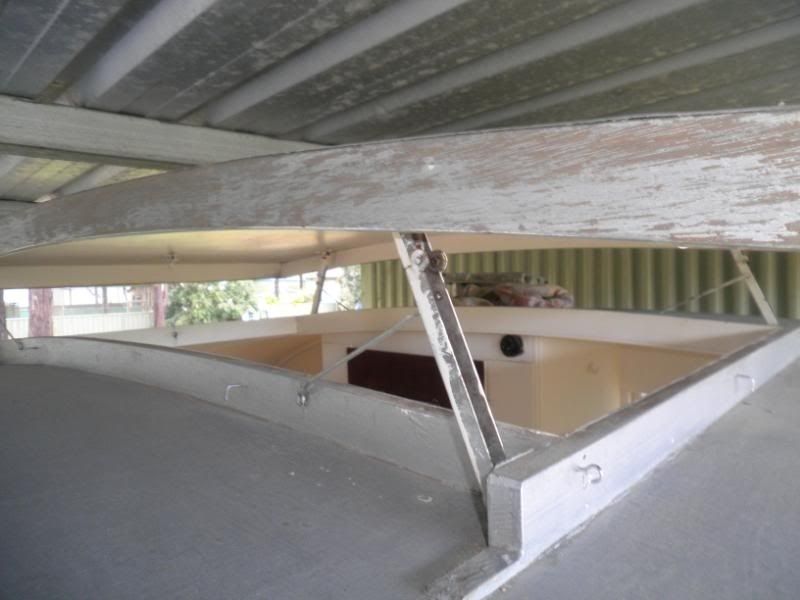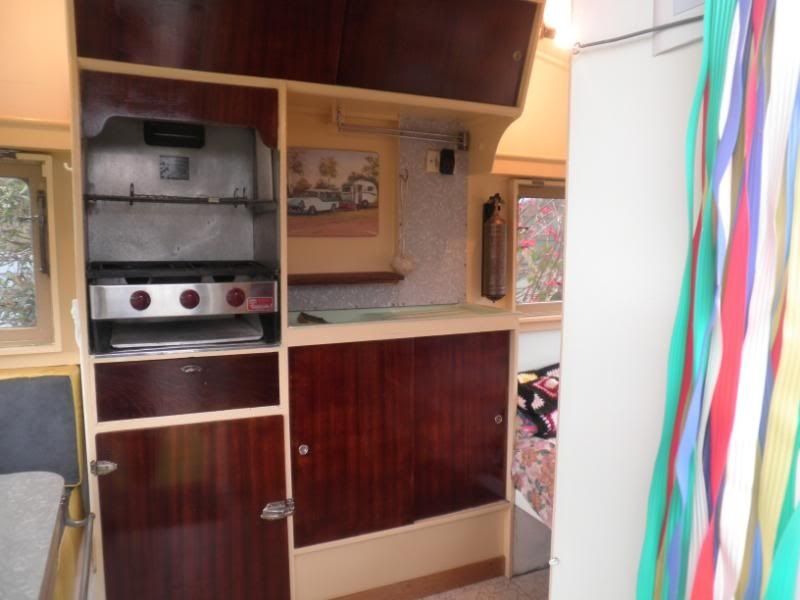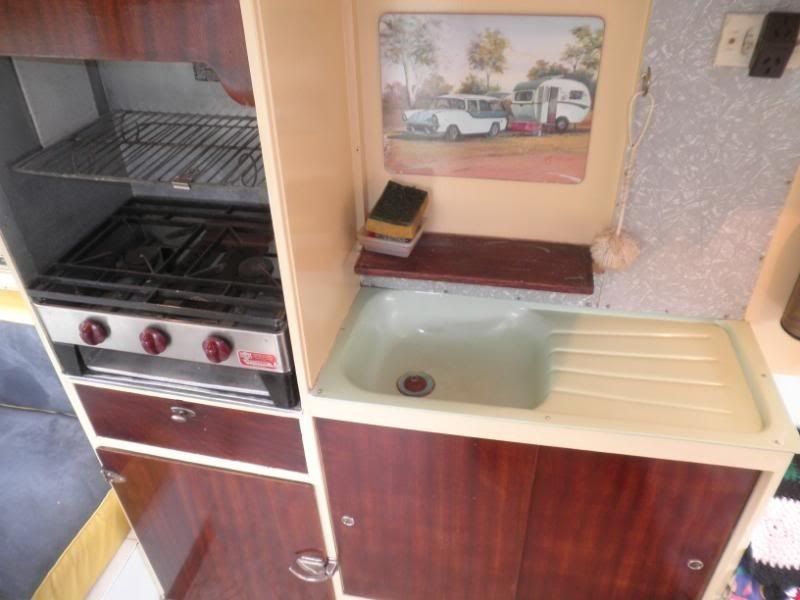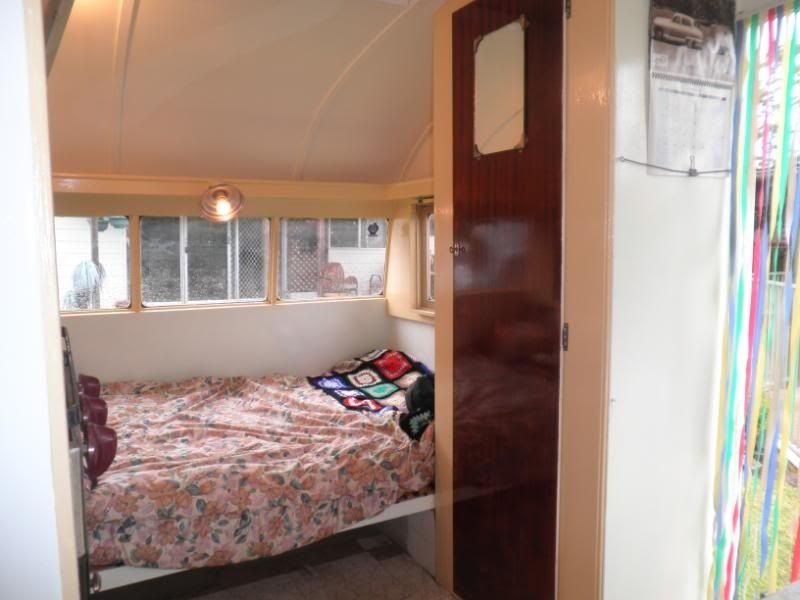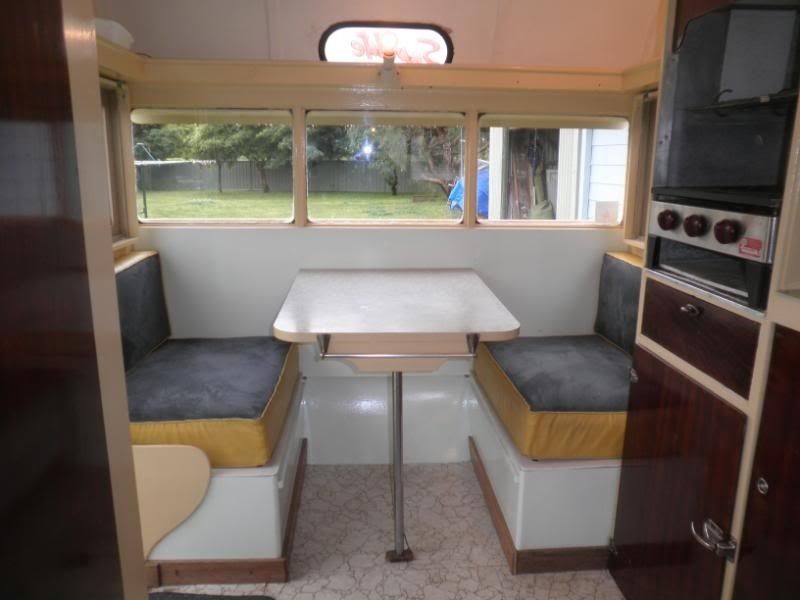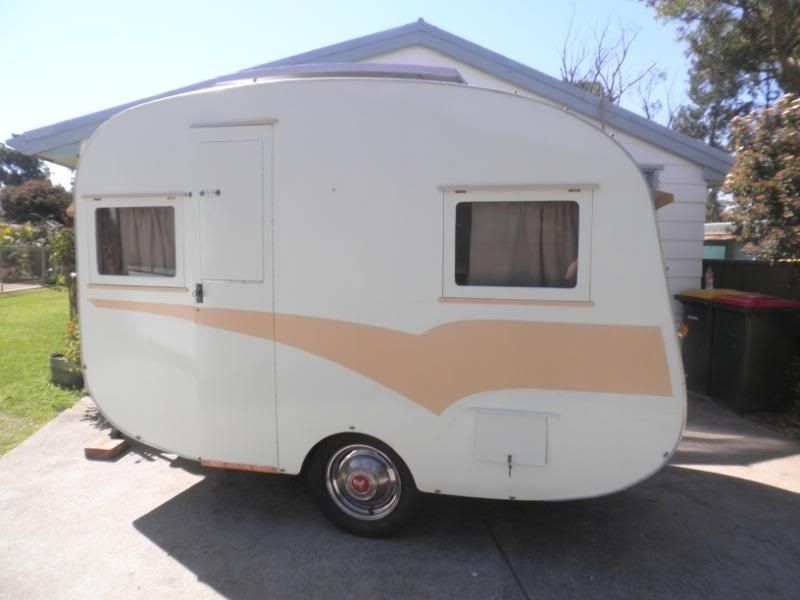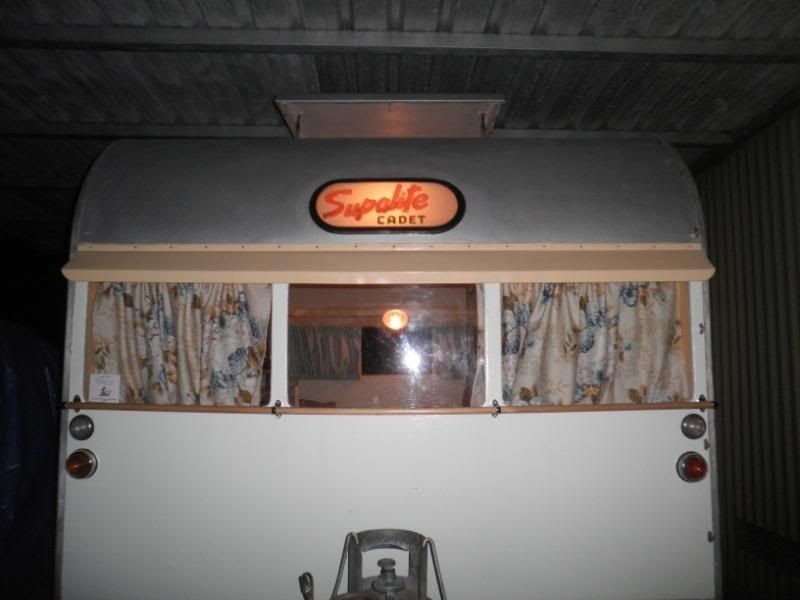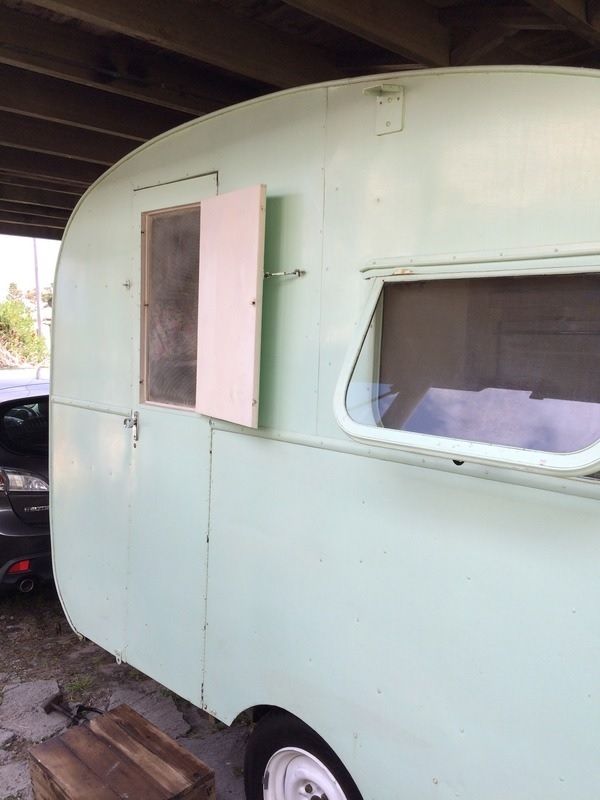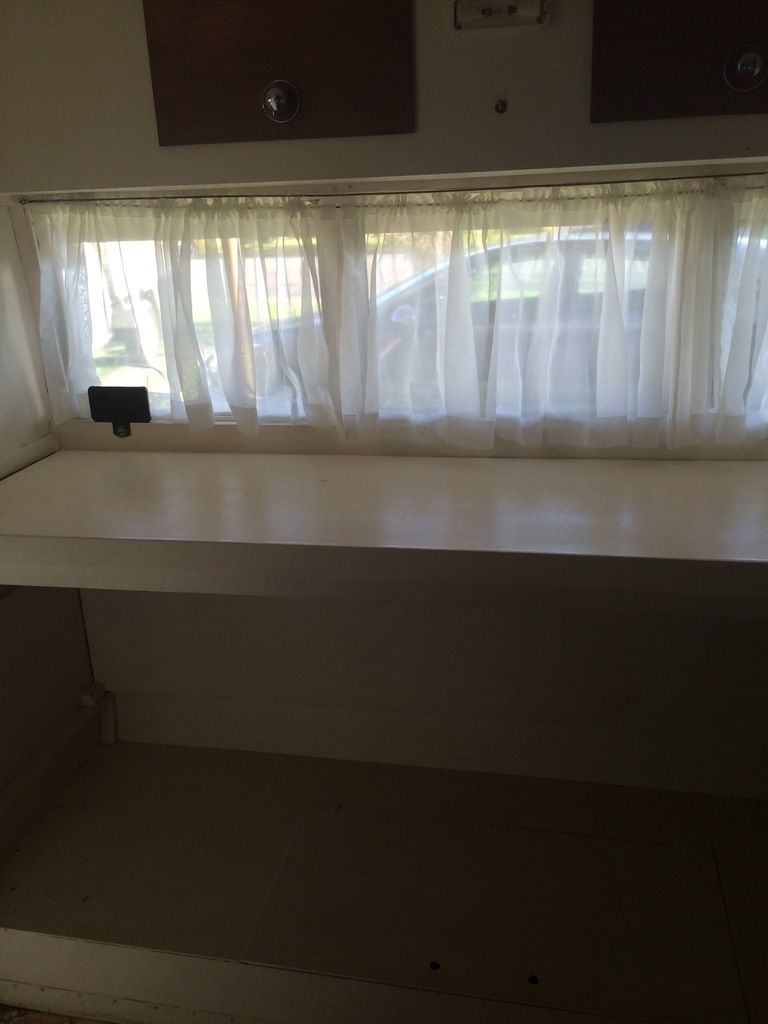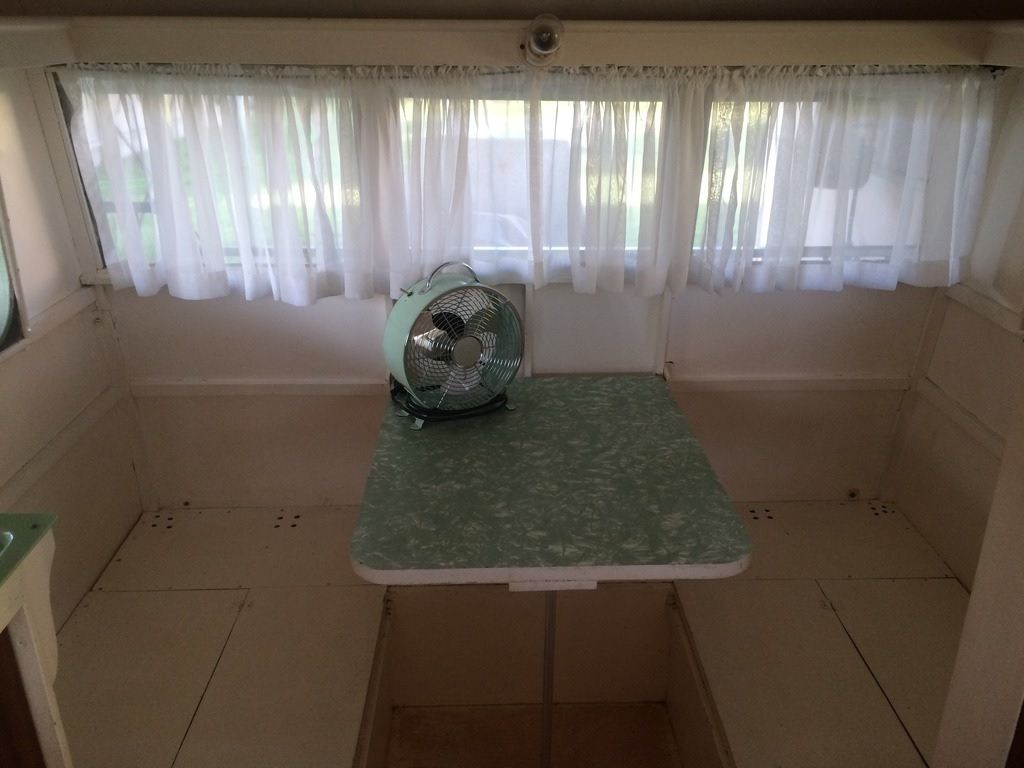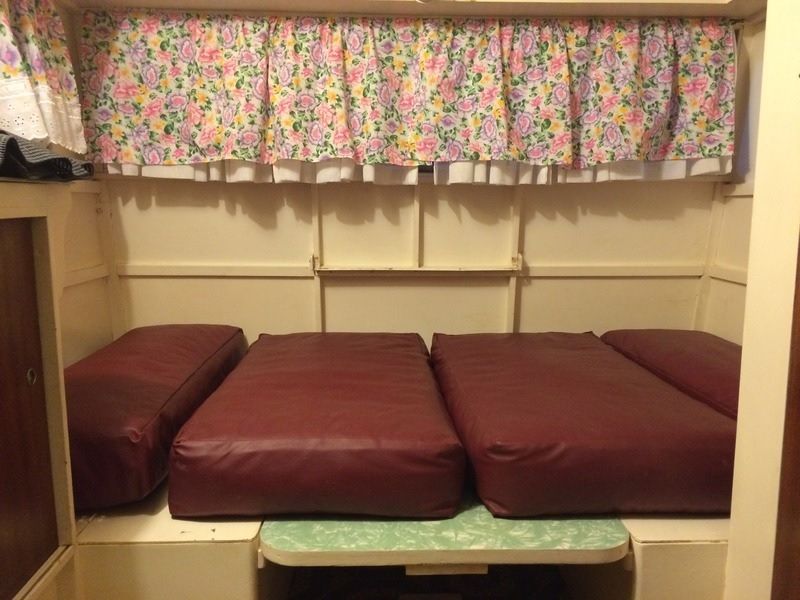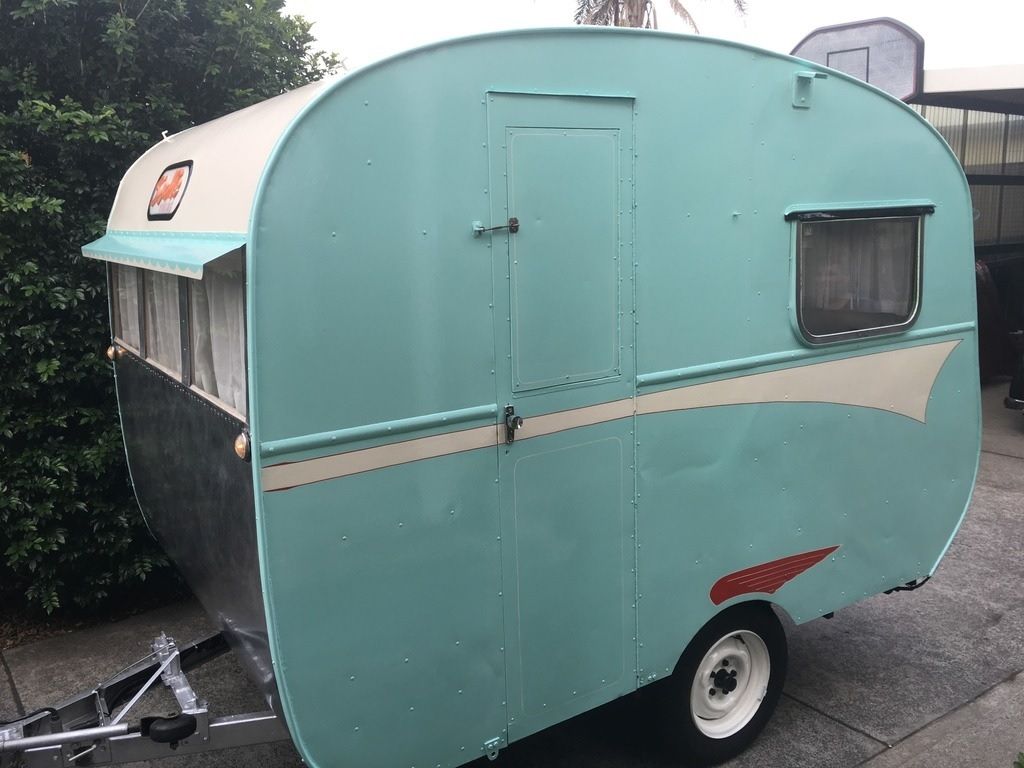|
|
Post by Franklin1 on Dec 13, 2007 22:24:36 GMT 10
SUPALITE HISTORY:
According to newspaper archives, the Supalite Caravan Co. was established in 1945 (...forum member mels54supalite said in 2007 that her grandmother was sure she honeymooned in one in 1947). We have research material that says the factory was located at 6 Coleridge St., Leichhardt NSW in 1954 (Keith Winser Caravans and Touring book), so at this stage I presume that was the address since start-up.
In June 1957, a new factory was set up at 258 Victoria Rd., Rozelle in NSW, and that remained the address of Supalite until 1970 and later. At the time of changeover to the new factory, Supalite advertised 10 caravans for sale in various stages of production, "cheap due to new construction methods". There's no explanation of what the new construction methods were, but I assume that means there would be some differences between, say, a 1956 and a 1958 Supalite.
Supalite plodded along for many, many years, including throughout the 1960s when many other manufacturers fell by the wayside. In 1961 they were keen to advertise that their caravans were "hand made...no mass production methods used here". They stayed a small operation, making a correspondingly small number of caravans during the '60s. It seems that Alf Franks, the owner of the Supalite factory, had an interest in water craft as well as caravans, so his business made an income from building fibreglass pontoons and not just caravans. In 1970, there are still advertisements for pontoons from the Supalite Caravan Co.
I haven't studied the archives closely to know what caravans Supalite made throughout the '60s, however in 1968 and 1969 they were constantly advertising a "Weekenda" (or "Weekender" in some advertisements) that folded from 40 cubic feet out to 175 cubic feet and had a floor space 10ft x 10ft. It was described as "a revolution". I gather this must have been a version of the fold-out camper trailers that were launched onto the market during that time (...the Cargill Caravanette was another that made it through to the end of the 1960s). I couldn't find any photos of this Weekenda in the archives (but it's interesting to know the Weekenda nametag lasted a long time).
Supalite also made an Amphibivan during the early 1960s (see further down in this thread) which reinforces my belief that Alf Franks had an apparent love of salt water.
Other Supalite caravans from the 1950s are well covered in the following posts...
|
|
|
|
Post by kingy on Dec 14, 2007 6:50:31 GMT 10
This supalite is from around the mid fifties and was purchased as a rolling shell, then received a basic fittout from it's new owner The van is extremly light, having never been lined, and has never had any form of refrigeration fitted. Many years ago it crossed Australia twice, back when a lot of the road was dirt. A Zephyr being the main towcar i believe. We are it's second owners. 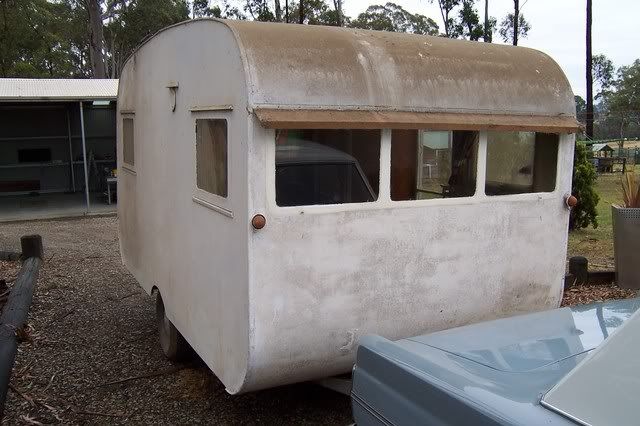 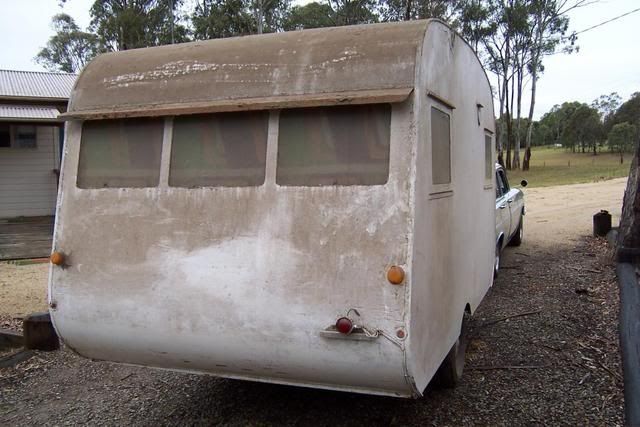  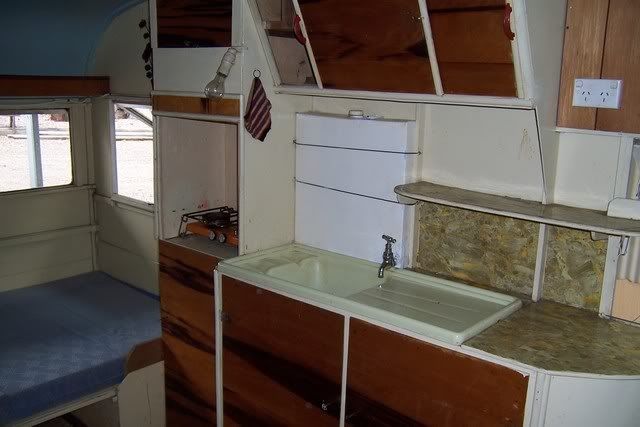 |
|
|
|
Post by Franklin1 on Dec 24, 2007 20:57:37 GMT 10
Supalite Wee-Kenda caravan advertisement: [not dated] 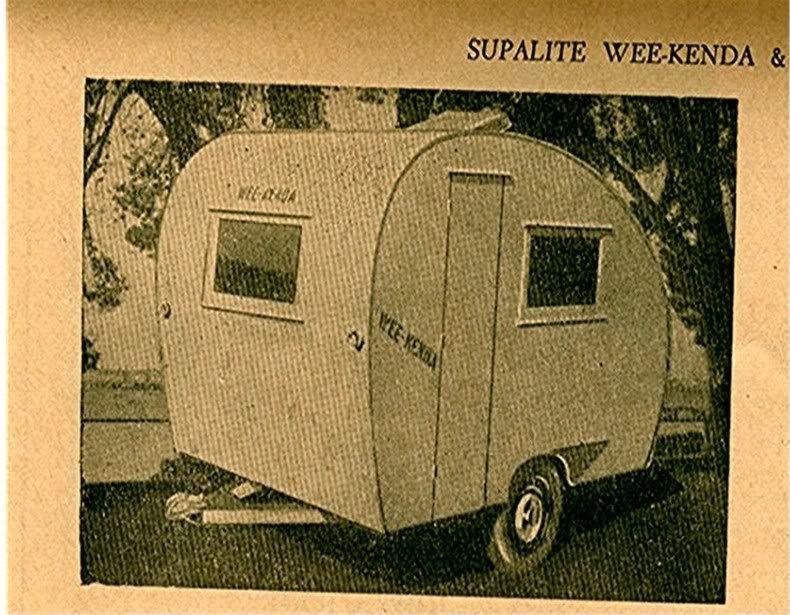 (source: posted by Mark T, Apr 17, 2007)
|
|
|
|
Post by Franklin1 on Dec 24, 2007 21:08:52 GMT 10
1954 Supalite caravan: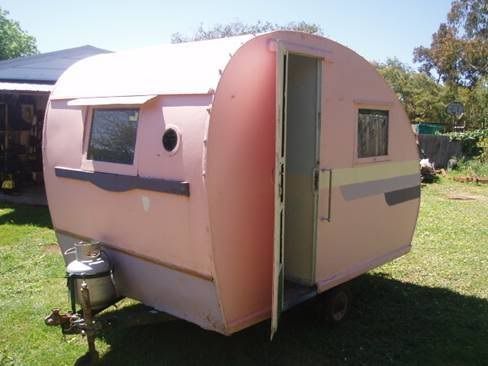 (source: posted by mels54supalite, Nov 14, 2007)
|
|
|
|
Post by Franklin1 on Feb 13, 2008 21:08:04 GMT 10
Supalite Wee-Kenda caravans: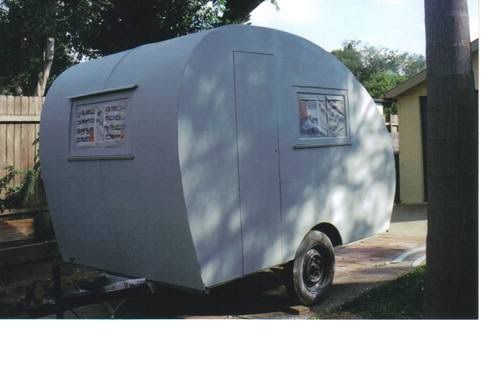 (source: posted by pcc, April 22, 2006) ------------------------------------------------------------  (source: posted by cobber, Feb 11, 2008, who wrote: The table drops down to make a single bed. At the rear was a fixed single, double at a squeeze, bed. The cupboard just inside the door, with the Coleman stove on it, had handles on each side so that the whole cupboard, including knives forks crockery pots and pans could be lifted off its plinth and taken outside to do the cooking under the annex. It had no sink or water supply & no ice box.)
|
|
|
|
Post by sportsman1 on Feb 14, 2008 16:00:19 GMT 10
Hey MARK T.
The advert you originally posted on April 17th has on it "Superlite Wee-kenda &" I for one would love to know what came after the &. This might clear up a lot about the different vans that Superlite had available.
Over to you GPB.
|
|
|
|
Post by cobber on Feb 15, 2008 18:46:23 GMT 10
In Keith Winsers "Australian Caravans and Touring" magazine of 1954 it "Introduces" the "Supalite Wee-Kenda". 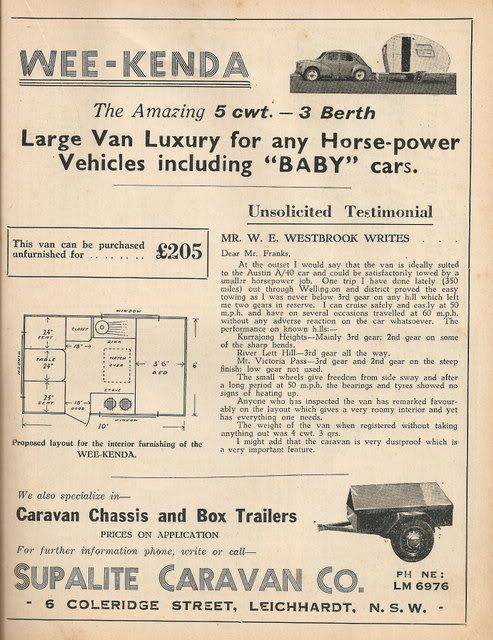 The"Atlas" is advertised on page one of the advertisement. That would be the one Kingy has at the start of this thread. 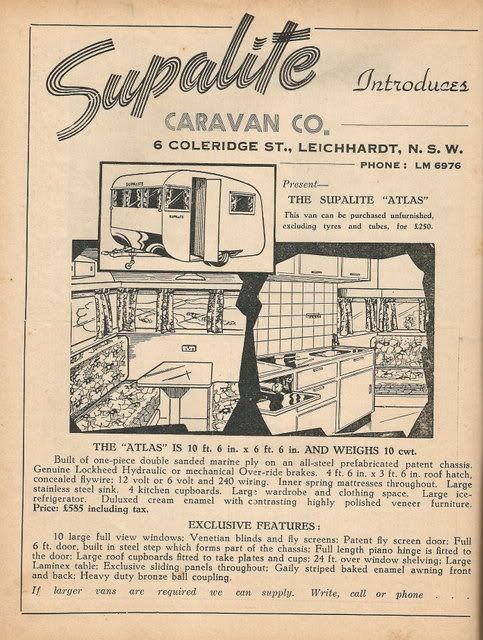 Cobber. |
|
|
|
Post by kingy on Jun 26, 2008 19:15:35 GMT 10
This van is identicle to mine 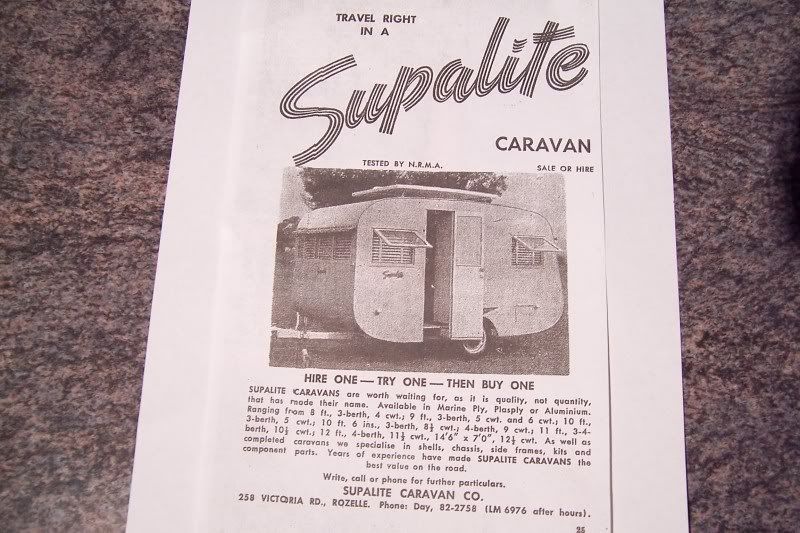 |
|
|
|
Post by Franklin1 on Oct 14, 2008 21:00:40 GMT 10
Supalite caravan models 1956:
In the Sydney Morning Herald archives, edition Wednesday 14 March, 1956, a classified advertisement lists the following Supalite caravans:
Atom 4 cwt
Week-ender 5 cwt (note the spelling shown as "-ender")
Viking 71/2 cwt
Cadet 81/2 cwt
Atlas 10 cwt
Spacemaster 111/2 cwt
...The rest of the advert is not shown...
|
|
|
|
Post by Don Ricardo on Nov 3, 2008 21:01:43 GMT 10
1956 Supalite advertisment and publicity: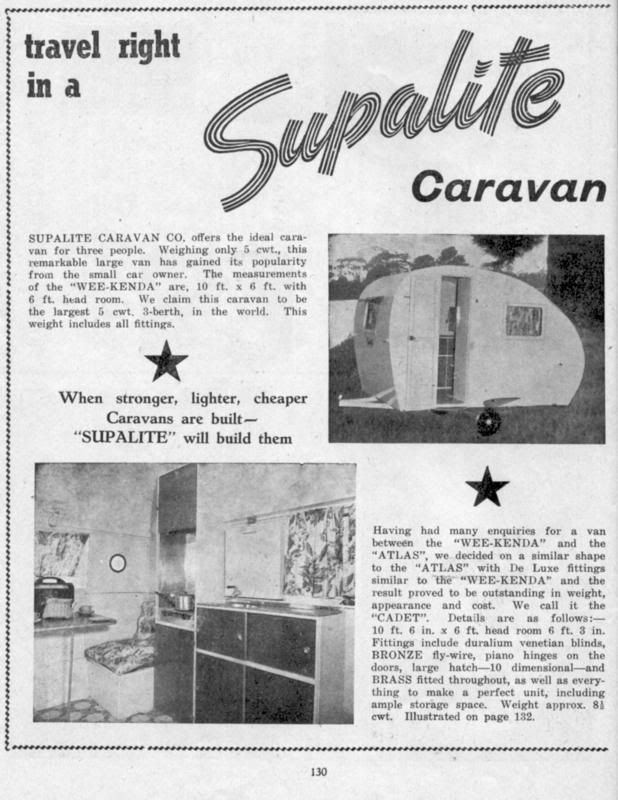 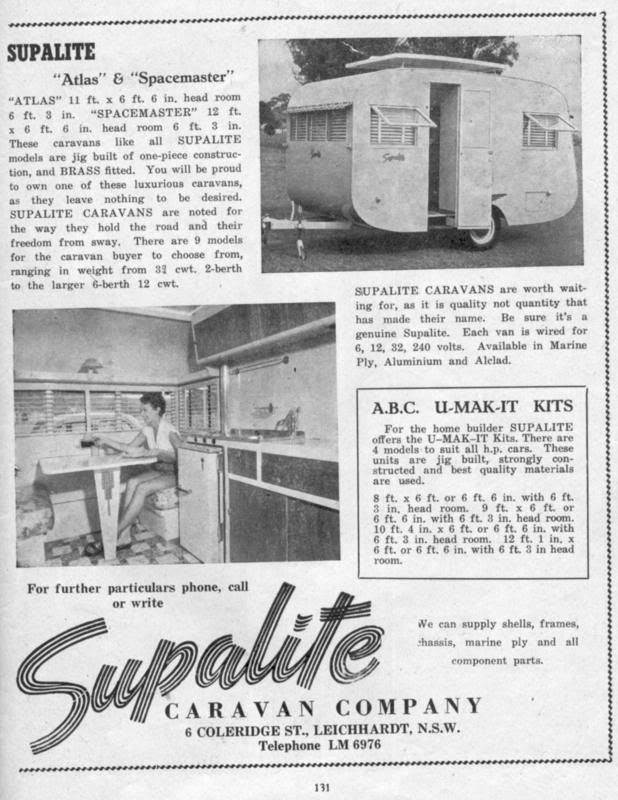 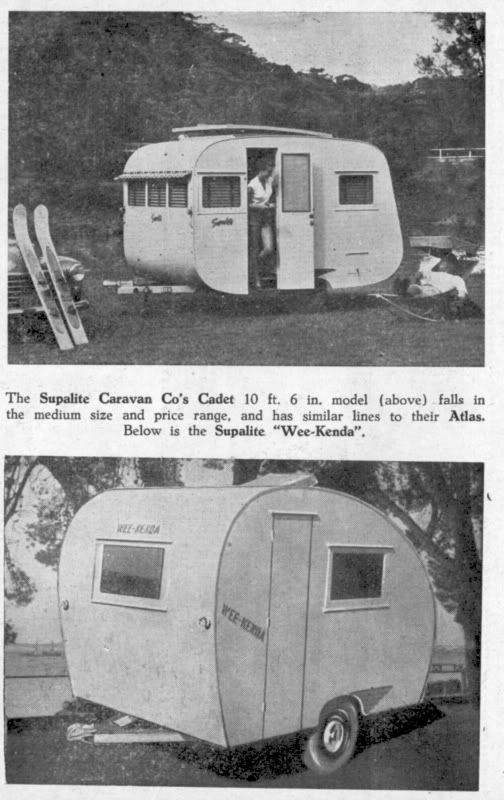   (Source: Keith Winser, Australian Caravan & Touring Manual for 1956, pp 130-132 & 81) (Source: Keith Winser, Australian Caravan & Touring Manual for 1956, pp 130-132 & 81)
|
|
|
|
Post by cobber on Apr 23, 2009 11:27:59 GMT 10
The “Supalite Amphibi – Van” from the 1962 Caravan and Touring Manual. Claiming to be “the worlds first dual-purpose amphibious caravan”  And this article gives Mr Franks opinions about why plywood is the best material for caravan construction    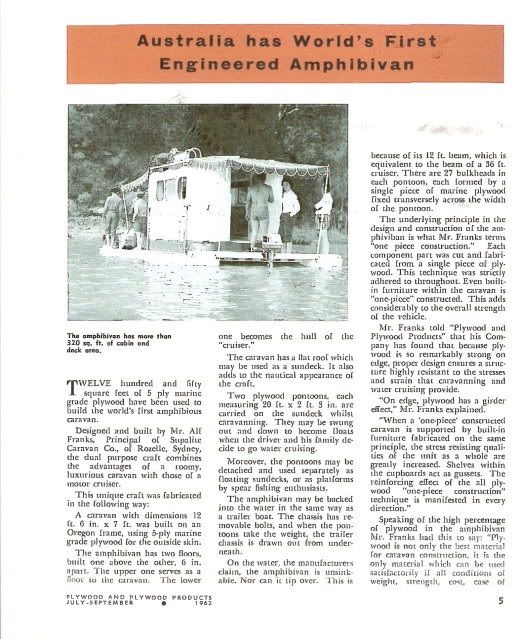  Cobber. |
|
|
|
Post by Franklin1 on Apr 25, 2009 21:01:47 GMT 10
cobber, that was a good find on the Amphibi - Van  Here's the background story... 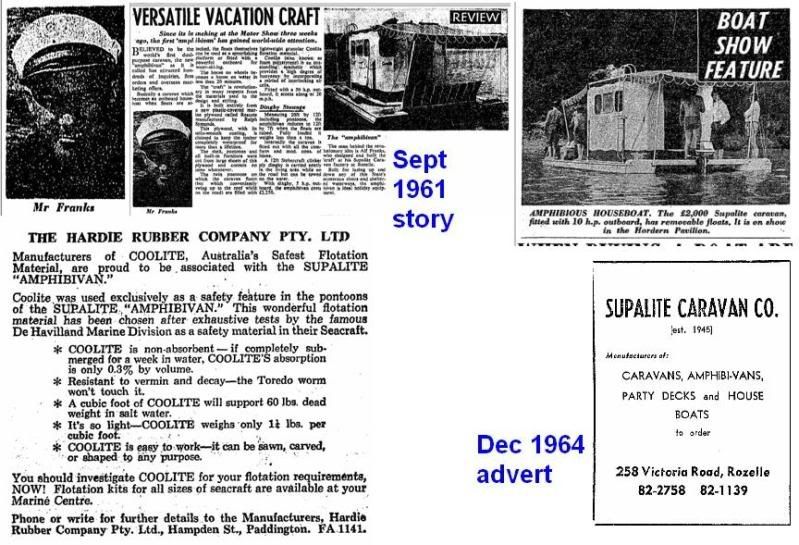 The article reads: "VERSATILE VACATION CRAFT Since its launching at the Motor Show three weeks ago, [in September 1961. The Caravan was exhibited at the Boat Show, which was part of the Motor Show at the time] the first 'amphibivan' has gained world-wide attention. Believed to be the world's first dual-purpose caravan, the new "amphibivan" as it is called has attracted hundreds of inquiries, firm orders and overseas marketing offers. Basically a caravan which becomes an outboard houseboat when floats are attached, the floats themselves can be used as a spearfishing platform or fitted with a powerful outboard for water-skiing. [imagine that!!  ] ] The house on wheels becomes a house on water in less than 20 minutes. The "craft" is revolutionary in many respects from the materials used, to the design and styling. It is built entirely from a new plastic-covered marine plywood called Rescote manufactured by Ralph Symonds. This plywood, with its satin-smooth coating, is claimed to keep the timber completely waterproof for more than a lifetime. The shell, pontoons and all built-in furniture were cut from large sheets of this plywood and contain no joins whatsoever. The twin pontoons on which the caravan floats (but which conveniently swing up to the roof while on the road) are filled with lightweight granular Coolite flotation material. Coolite (also known as foam polystyrene) is an outstanding synthetic which provides a high degree of buoyancy by incorporating a myriad of interlocking air cells. Fitted with a 50hp outboard, it scoots along at 20mph. Measuring 20ft by 12ft including pontoons, the amphibivan reduces to 12ft by 7 ft when the floats are raised. Fully loaded it weighs less than a ton. Internally the caravan in fitted out with all the comforts and mod. cons. of home. A 12ft Stebercraft clinker ply dinghy is carried neatly in the living area while on the road but can be towed on the water. With dinghy and a 5hp outboard, the amphibivan costs £2,250. The man behind the revolutionary idea is Alf Franks, who designed and built the 'craft' at his Supalite Caravan factory at Rozelle. Built for lazing up and down any of this State's numerous rivers and sheltered waterways, the amphibivan is ideal holiday equipment." ------------------------------------------------- The amphibivan was intended to be just a one-off exhibit at the 1961 Boat Show as 'something different'. But such was the response to the amphibivan that Supalite went on to make it for a few years. As the picture at the start of this post shows, it was still being advertised in December 1964. ------------------------------------------------- ps. I have revamped the first post in this thread to include the Supalite information I found in the archives. |
|
|
|
Post by surfingyogini on Dec 1, 2010 12:58:49 GMT 10
Supalite kits from the 1960 Plans 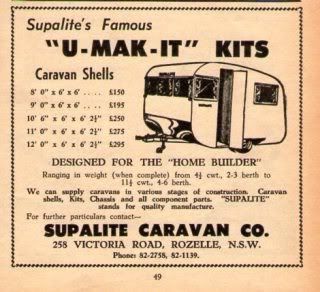 |
|
|
|
Post by Don Ricardo on May 8, 2011 23:09:02 GMT 10
Photos of Alanjb07's father's Supalite posted on 29 April 2011. The photo was taken in the early 60's: Note the key features of Supalite vans - triple front window with shade over, 'Supalite' signage over front window (just visible) matching style seen in adverts in Reply # 6, and the red wings over the wheel arch. The wings insignia can be seen in various guises in most of the Supalite advertising. The caravan as it is today in Alanjb07's hands, and showing typical Supalite profile:  For the story of this van, and further pics click here. Don Ricardo
ADDENDUM - 10 August 2014Additional photos of Alanjb07's father's Supalite included as part of an Ebay listing when the van was advertised for sale by a subsequent owner in August 2014:  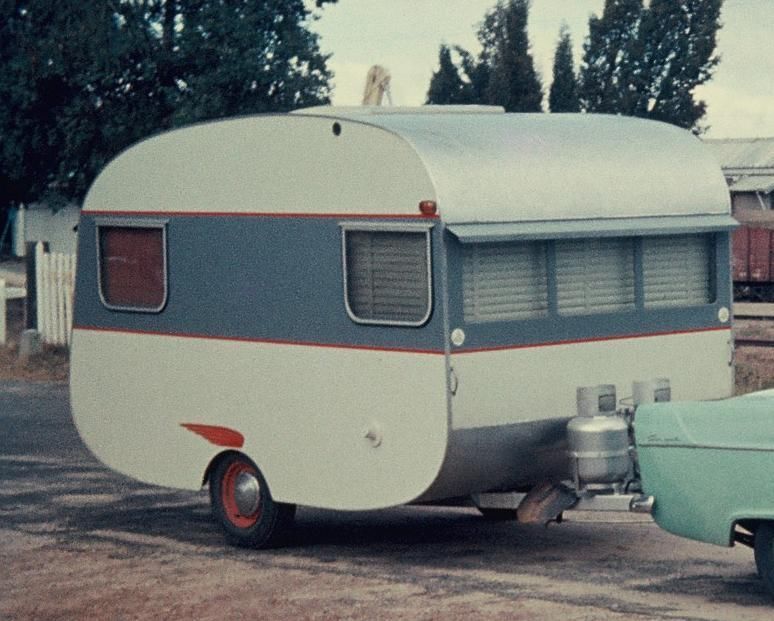
|
|
|
|
Post by frances on Jun 28, 2012 19:10:12 GMT 10
How can I know for sure the age of my Supalite Caser caravan. It has a little metal tag to say it was build in Leichardt N.S.W.
|
|
|
|
Post by Franklin1 on Jun 28, 2012 19:57:01 GMT 10
G'day frances, I know you meant to type "Cadet" rather than Caser (slippery keyboard, eh?!  ) As you can see in the history above, the Cadet model was introduced in 1956. I don't suppose the tag you've got has the actual street address on it, rather than just "Leichhardt"? There seems to have been an address change sometime in 1957. Prior to that the address was 6 Coleridge Street, Leighhardt as shown in many of the pictures above in this thread. The new address was 258 Victoria Rd., Rozelle, also shown in advertisements above. I'm inclined to think that if you've got 'Leichhardt' on the tag, then your van was built at the old address. Given that the Cadet started in 1956, and they seemed to have moved to the Rozelle address in 1957, I reckon you could toss a coin and choose either one of those years. cheers, Al. |
|
|
|
Post by Don Ricardo on Jul 28, 2015 17:29:06 GMT 10
Photos of an 8ft 4 cwt Supalite Atom owned by Ethel1: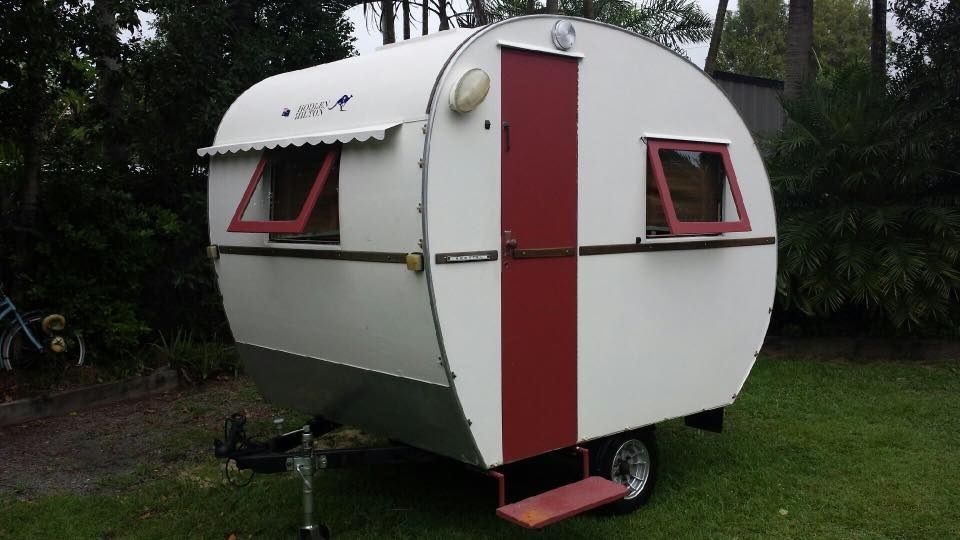 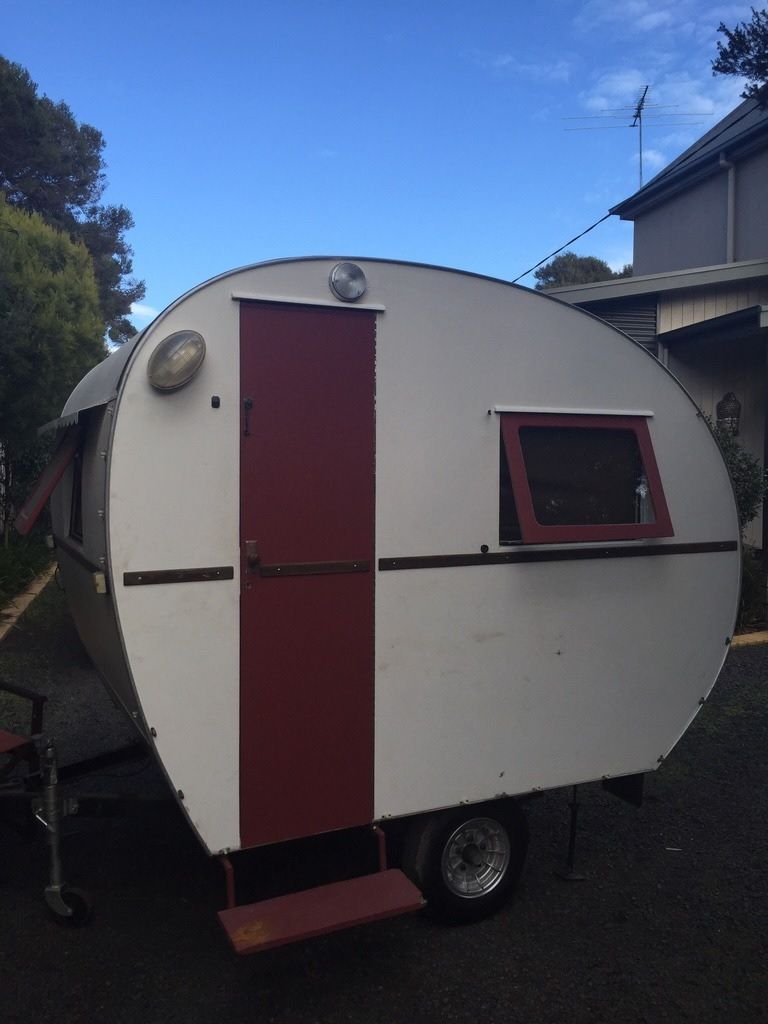 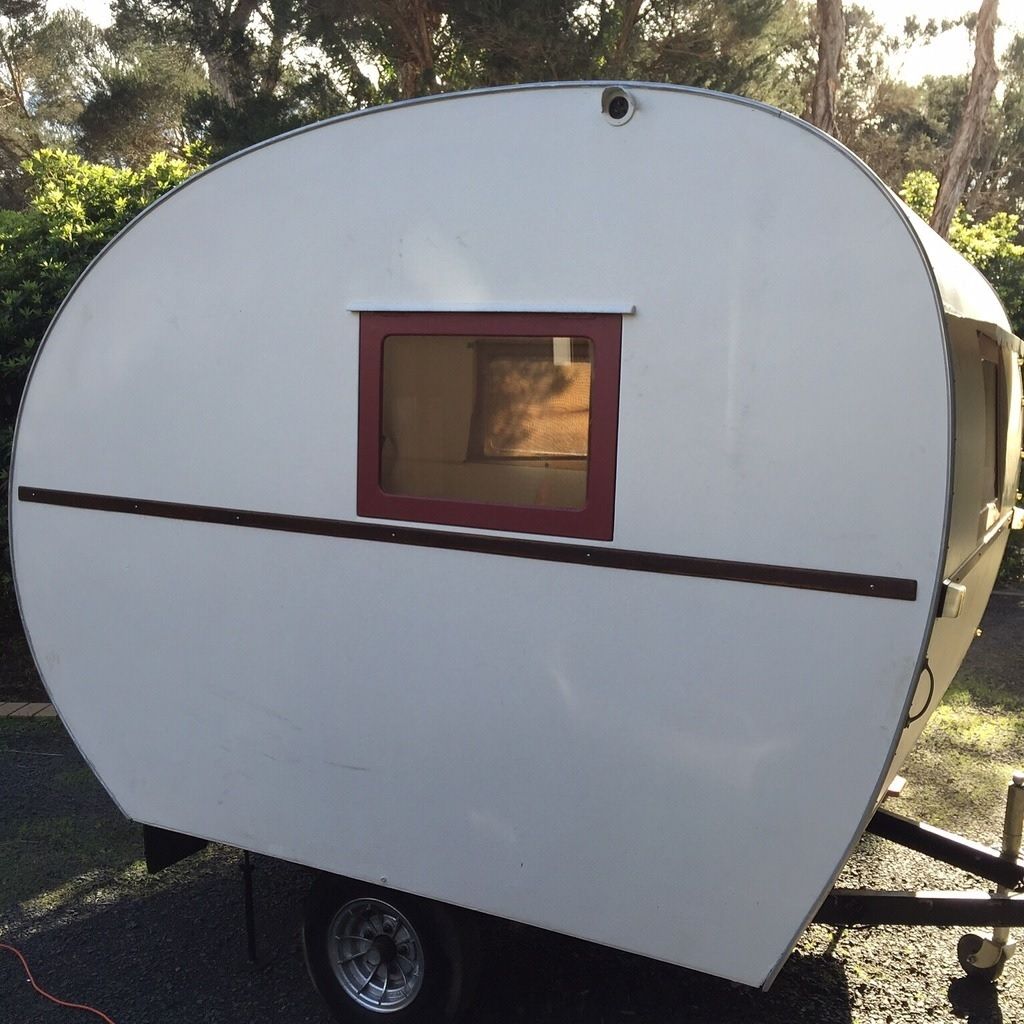 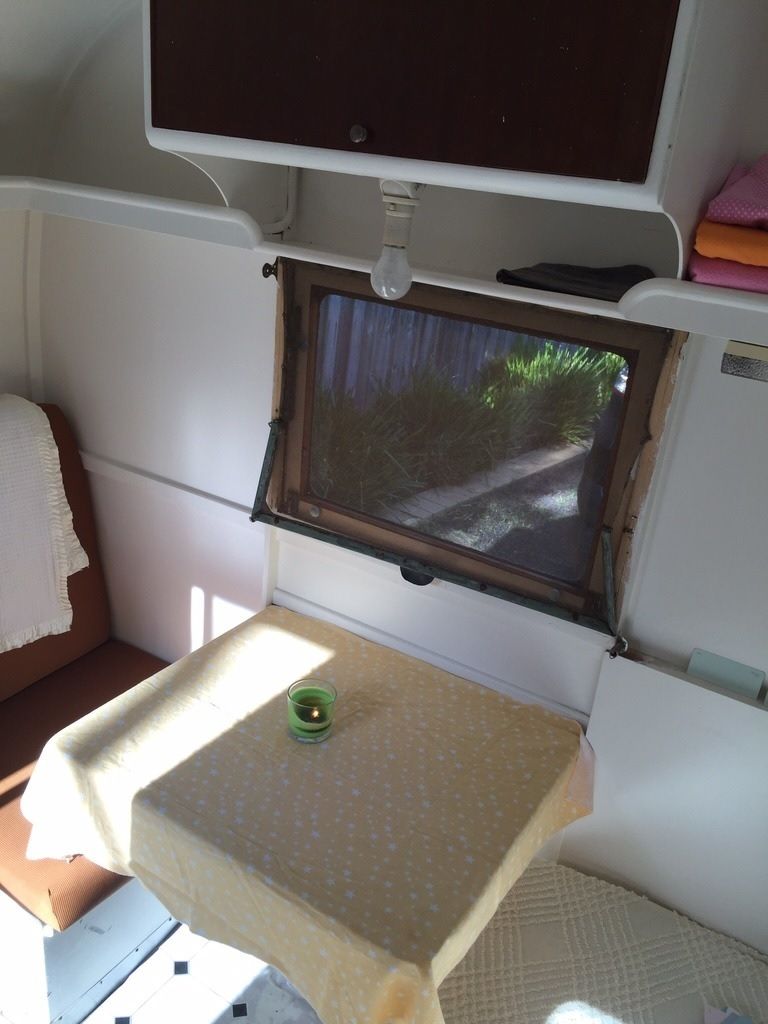 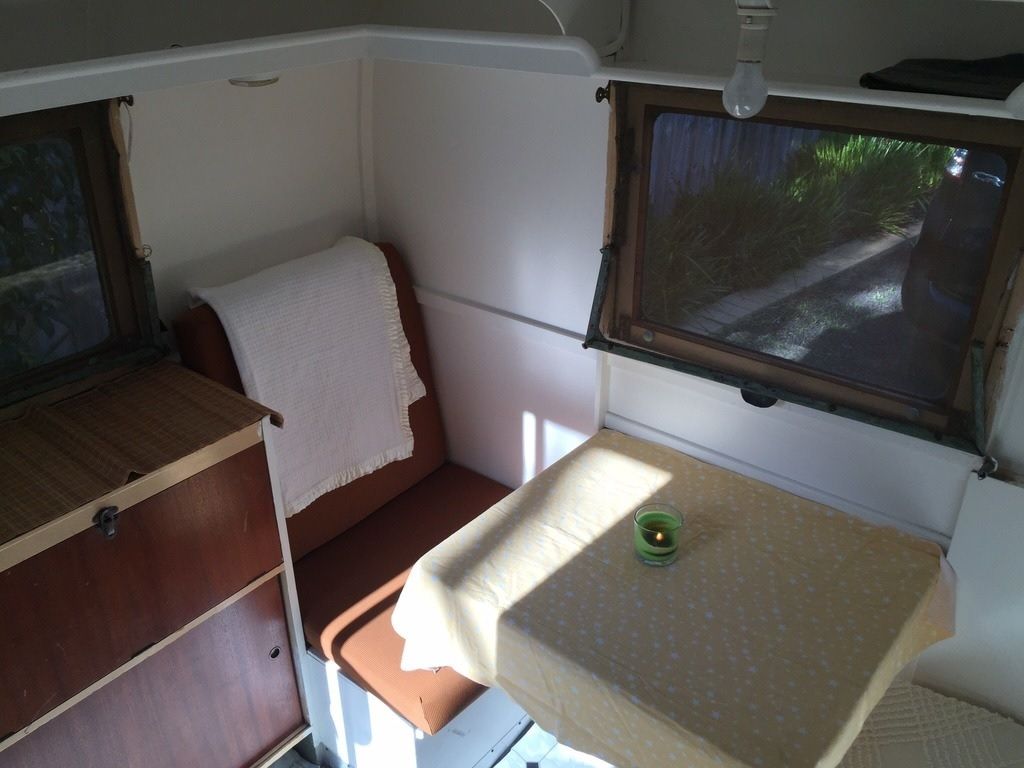 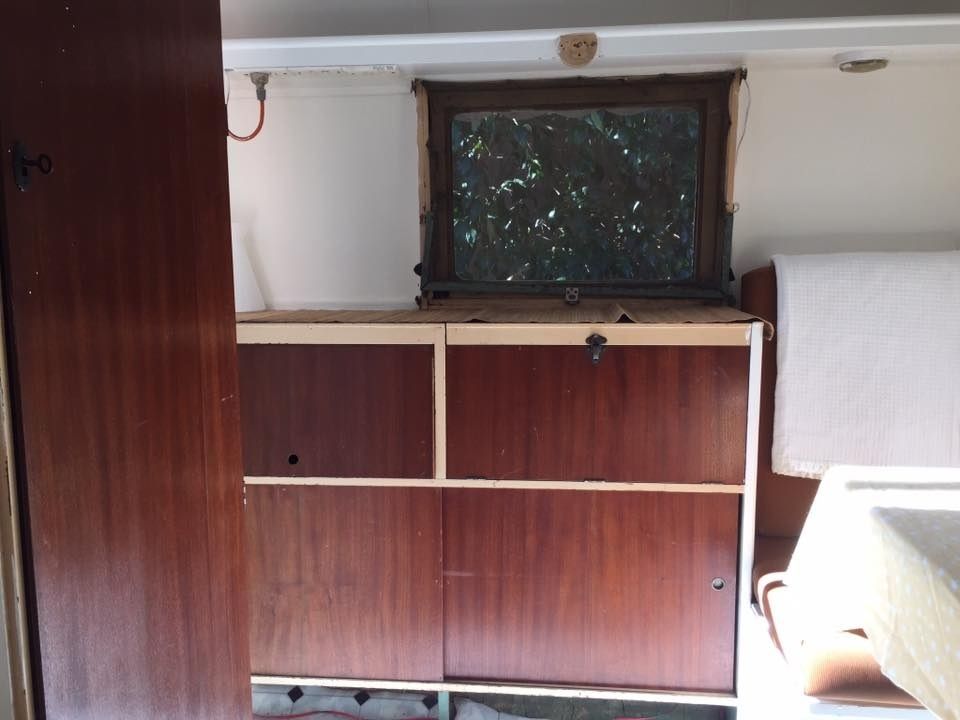 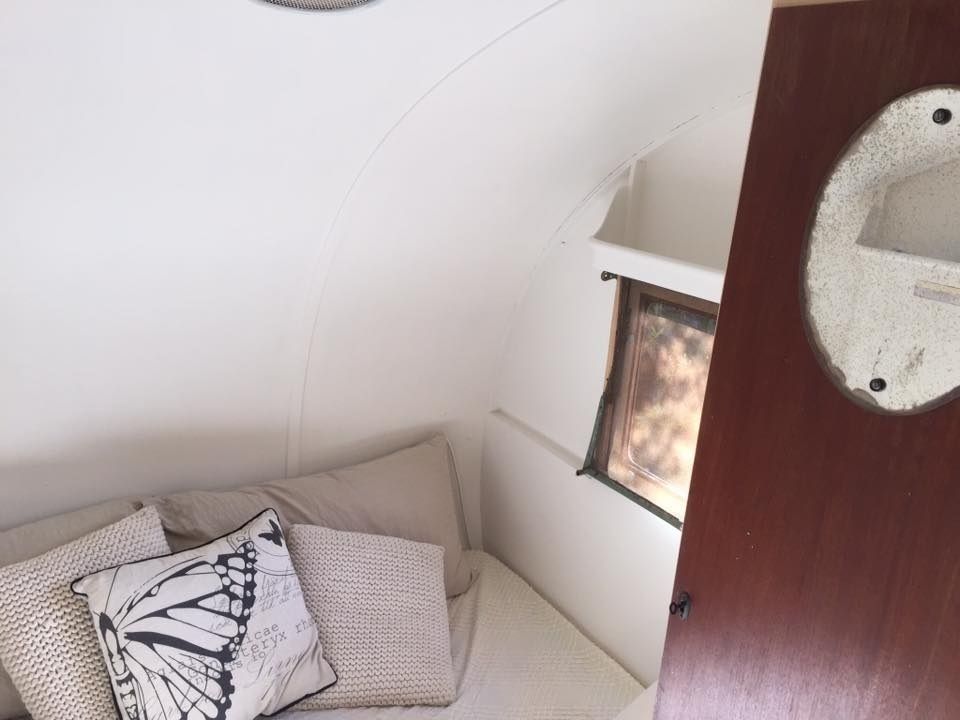
The Atom model appears to have been introduced by Supalite around 1956. The 1960 Winser indicates that the Supalite Atom was still available and that it was an 8 footer suitable for towing behind "a light sports sedan or tourer like a Fiat or Renault". Note the sliding cupboard doors on the cupboards under the galley bench. This seems to have been a Supalite signature feature at that stage, and can also be seen in photos of Supalite Weekendas around the same time. Ethel1 has told us that her little Atom doesn't have a sink, which is also another interesting feature of the van. For further info about this van and the process undertaken to identify it, click here. Don Ricardo
|
|
|
|
Post by Don Ricardo on Sept 28, 2015 10:51:48 GMT 10
|
|
|
|
Post by Don Ricardo on Sept 28, 2015 11:00:55 GMT 10
Information about Supalite caravans from the 1961 Winser caravan manual: (Source: K Winser, Australian Caravan and Touring Manual for 1961, p 157) Note that the photo of the Cadet shows the Supalite 'signature' red wings above the wheel arch seen in earlier adverts. Don Ricardo
|
|
|
|
Post by akeepsake on Nov 15, 2015 13:09:02 GMT 10
Found this two page add in 1957 KW Touring guide It's the only mention of the Viking I could find in an ad apart from the list of manufacturers 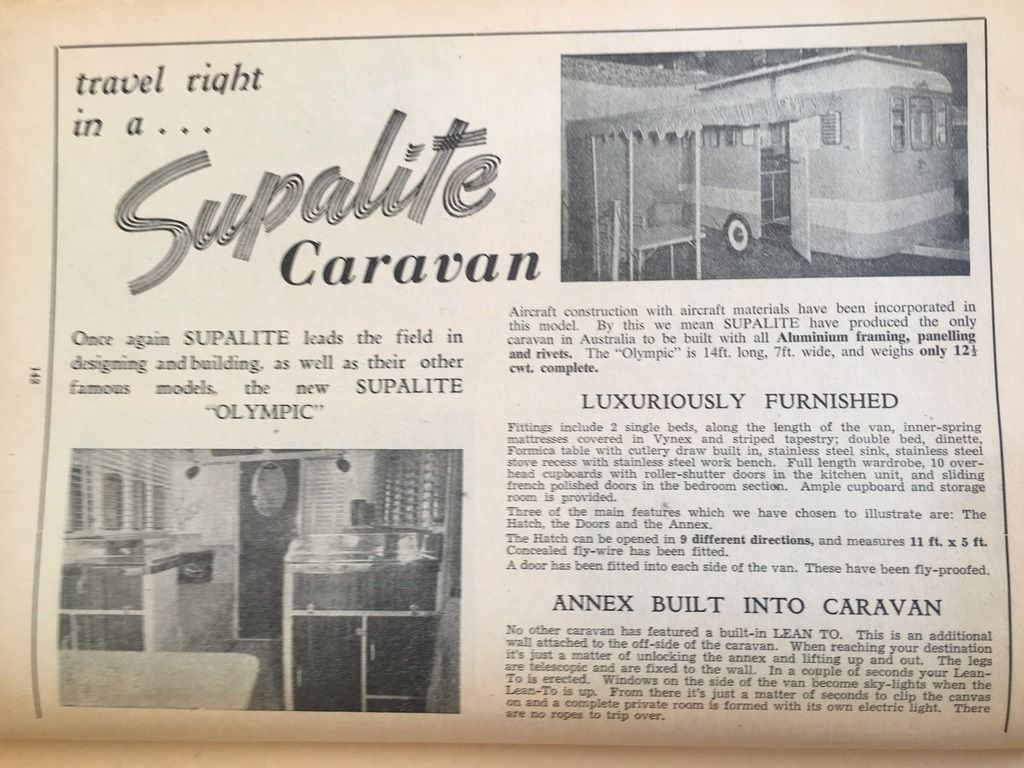 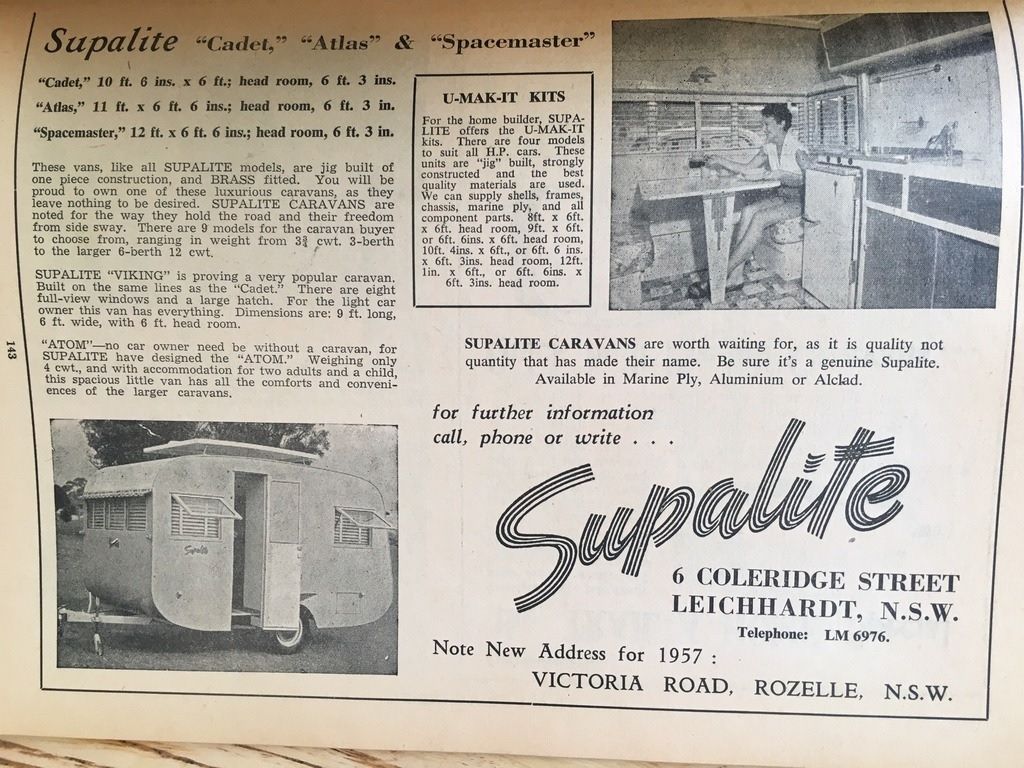 |
|
|
|
Post by No longer vanless on Nov 16, 2015 11:03:41 GMT 10
Great find Andrew! Thanks so very much. If only they featured 'the very popular' Viking in an ad. Or we could find another. :-)
|
|
|
|
Post by Don Ricardo on Apr 1, 2016 18:07:26 GMT 10
|
|
|
|
Post by Don Ricardo on Aug 10, 2017 18:12:00 GMT 10
Photo of a Supalite Atom owned by Ray and Merle Bartlett: Note the 'Supalite' wings over the wheels. Ray Bartlett worked with Herb Jones, proprietor of Jones Spring Works, who developed the Jones Dolly Wheel. After Herb Jones died, Ray Bartlett took over the company. The photo was provided by Boblor as part of his documentation of the history of the Jones Dolly Wheel here. Don Ricardo
|
|


























 ] The house on wheels becomes a house on water in less than 20 minutes.
] The house on wheels becomes a house on water in less than 20 minutes.
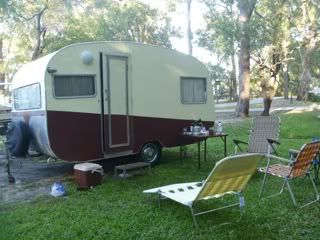






 )
)






